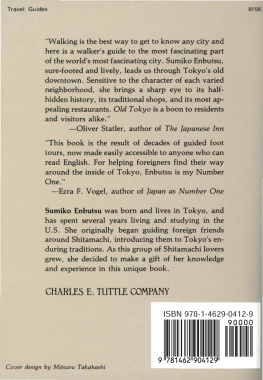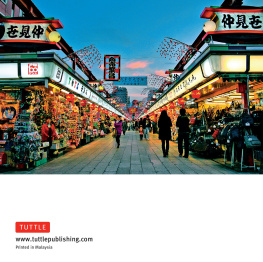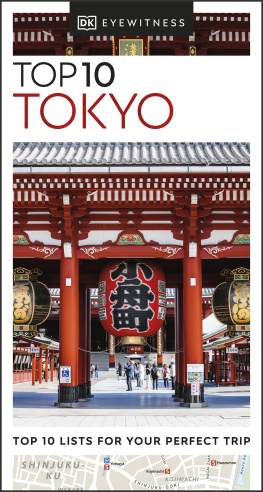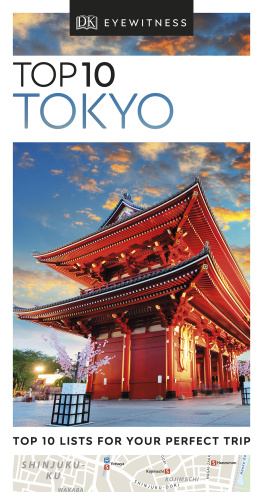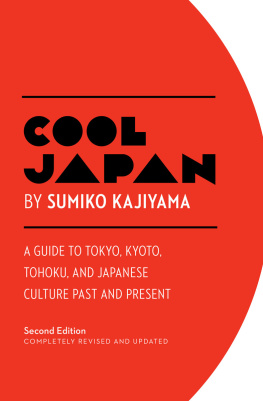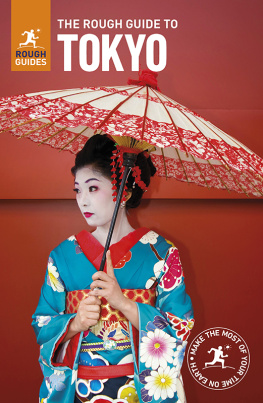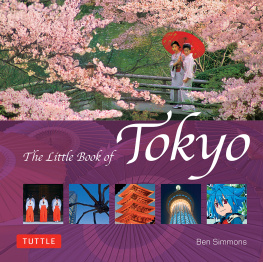INTRODUCING
TOKYO


THE CAPITAL OF COOL

Tokyo is a city of wonderful and often bemusing contrasts and contradictions. Traditional Japanese gardens and ancient temples sit at ease in the shadows of towering skyscrapers. The conservative suits that fill the subway at rush hour can often be punctuated by a colorful kimono. There is a set way of doing almost everything, yet fashion-wise absolutely anything can go. The list goes on. The Japanese like to think of themselves as being unique (sometimes a touch too much), but thanks to a patchwork of districts, each with its own personality, not to mention an unorchestrated blend of new, old, home-grown and imported, their capital is undoubtedly one of the most distinctive cities on the planet.
THE WORLDS ULTIMATE CITY
Metropolis. Mega city. Call Tokyo what you will, but there is no disputing the status of Japans capital as one of the worlds great cities. Just over 13 million people call Tokyo home, nearly 35 million if you count the neighboring prefectures of Kanagawa, Saitama and Chiba, which with Tokyo make up the most common definition of the Greater Tokyo area, an unbroken urban sprawl that spreads mile upon mile west, north and east from the center of Tokyo.
Tokyos current place in the world, only 70 years after the city was all but decimated by war (90 after it was leveled by an earthquake), is nothing short of miraculous. From a business perspective, the Tokyo Stock Exchange has become one of the main financial hubs in Asia, while Tokyo also competes with Hong Kong, Singapore and Shanghai as the Asian base for many multinational corporations, not to mention being home to major Japanese corporations with global reach and recognition, companies that have forged a reputation for cutting-edge and precision technology and efficiency.
In a sporting sense, after rebuilding from World War II, the Tokyo Olympics in 1964 was one of the first opportunities for Tokyo to show the world it was back. Since then, Tokyo has become the host venue for the 2002 World Cup, held jointly with South Korea, as well as a regular host of footballs Confederation Cup and many other major sporting events across a range of disciplines. And with the awarding of the 2020 Olympics and Paralympics, Tokyo is now gearing up to once again be the focus of the worlds greatest sporting celebrations.
Culturally, traditional Japanese arts and craft have long been appreciated and influential overseas but, emanating from Tokyo, so too has modern Japanese culture. On the back of manga (comic books), anime (animation), video games and related products, Akihabara is the center point of a globally reaching otaku (geek) culture. Tokyo also has one of the worlds most vibrant contemporary art scenes, highlighted by major annual events such as the Roppongi Art Night and the biannual Design Festa, the worlds largest freestyle art fair.

Japan is a pioneer in the field of robotics. Hondas humanoid Asimo robot, pictured here performing at the Miraikan in Odaiba (page ), can talk, dance and even kick a football. Do not be surprised to soon see robots working as home helpers, receptionists and performing many other roles in Tokyo.

The crowds, energy, lights and fashions of Shibuya at night epitomize modern Tokyo.

The latest technology on display. Japans home electronics makers produce world-leading products, which you can check out in megastores like Yodobashi and Bic Camera or in the home electronics district of Akihabara (page ).

In Harajuku, you will see that style-wise anything goes in Tokyo.

Fashionable districts like Shibuya and Roppongi have some of the best clubs in Asia.
But one thing that differentiates Japan from other world cities is the population breakdown. For better or worse, and despite people from 190 different nations living in Tokyo, Tokyo remains predominantly Japanese. Of the 13.2 million people living in Tokyo, only around 3 percent are non-Japanese (compare that to over 30 percent in London or more than 35 percent in New York), the majority of that figure being Korean and Chinese nationals, many of whom were born in Japan.



The Tokyo Stock Exchange in the Nihombashi district is one of Asias main trading venues.

Despite Tokyos reputation for high-rise, high-tech and neon, tradition often punctuates the modern metropolis. Here, women wear kimono as they enjoy the spring cherry blossoms.
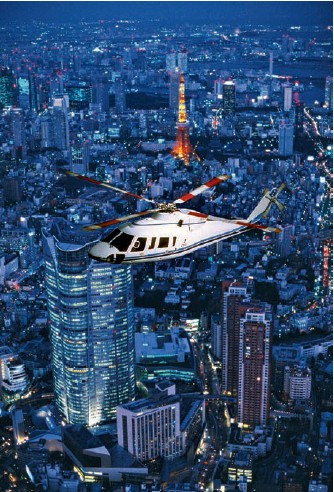
A helicopter cruise takes in Tokyo Tower and sprawling central Tokyo. For the especially well-heeled, helicopter taxis also run from Narita Airport to the city center.

Relaxing after work at the yakitori (grilled chicken) restaurants underneath the rail tracks by Yurakucho Station. Japan has a very rich and varied culinary heritage of its own, but Tokyo is also a truly global culinary city. With an estimated 90,000100,000 licensed eateries, Tokyos dining scene stretches from Korean, Chinese and Southeast Asian to European, Middle Eastern and beyond.

The subway whizzes by. Tokyos spider web of a train and subway network runs with incredible efficiency, only stopping (or just slowing) briefly when typhoons hit or when somebody commits suicide on the tracks.

If you want to experience Tokyos crowds first hand, try a rush-hour train or the Shibuya Crossing at night.



